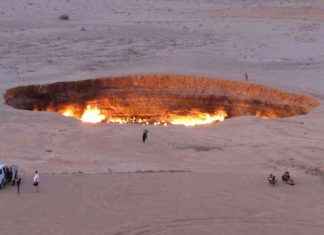Separately, Monday’s justices issued separate orders allowing maps chosen by the Supreme Courts of each state to be in force for the 2022 election. These maps are more favorable for Democrats than those drawn by state legislatures.
The map of North Carolina will most likely give Democrats another House seat in 2023.
According to Republicans, the Pennsylvania map will likely lead to more Democrats being elected, as both parties fight for control of the U.S House of Representatives in November’s midterm elections.
As is the norm in emergency applications, which are known as “shadow docket”, the justices did not provide any explanation for their actions.
Although the high court didn’t stop the use of the state court-ordered plan in this year’s elections, four conservative justices stated that they wanted it to address the issue that could severely limit the power state courts have over future federal elections. Republicans claimed that state courts are not authorized to question the decisions of the legislatures regarding the conduct and organization of the elections for Congress or the presidency.
“We must resolve this issue sooner or later. The sooner we do it, the better. This case provided a great opportunity to examine the issue. Unfortunately, the court found the occasion unopportune again,” Justice Samuel Alito wrote in disapproval of the Supreme Court order. He was joined by Justices Neil Gorsuch, Clarence Thomas.
Justice Brett Kavanaugh made the same point but stated that he did not want to interfere with this year’s electoral process. Friday was the deadline for North Carolina to file.
Because of partisan wrangling in the courts and lawsuits regarding congressional redistricting, both state legislatures were affected. In these states, where Republicans control the legislatures, the governors and state Supreme Courts are Democrats, the state courts were involved.
Pennsylvania’s Democratic Governor. Tom Wolf vetoed the plan the Republican-controlled Legislature approved, saying it was the result of a “partisan political process.”
Following the 2020 Census, the state’s delegation, which includes nine Democrats and nine Republicans is losing one seat in the House.
Republicans claimed that the map they had drawn would elect nine Democrats and eight Republicans. The GOP argued that the map approved by state courts will probably elect 10 Democrats.
Because of population growth, North Carolina is gaining a seat in Congress. The initial plan, which was drafted by Republican majorities in Congress, is most likely to give 10 seats to Republicans and four to Democrats. Redistricting plans in North Carolina are not subject to the governor’s veto.
After Democrats sued, the high court of the state selected a map likely to elect at least six Democrats.
Both states are still in litigation, but Monday’s Supreme Court orders indicated that the elections for Congress in North Carolina or Pennsylvania this year would be held under the approved maps by the state’s top courts.








